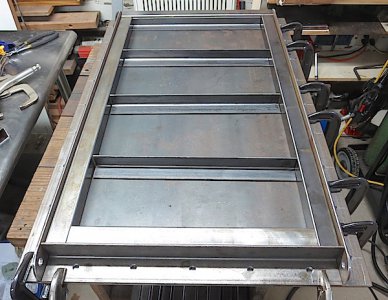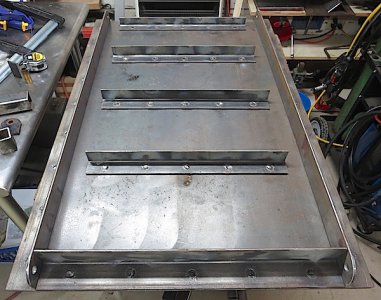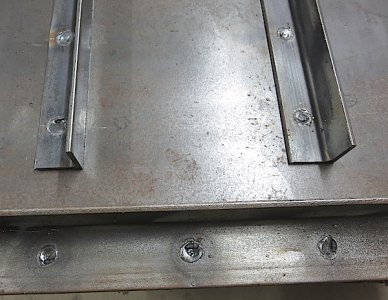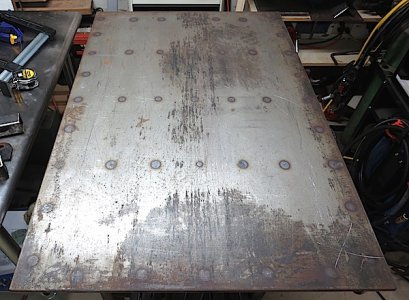Fomogo, I really don't want to bolt it. It is going to take a lot of attachment points to straighten my piece of 1/4 steel. It already has some waves in it. Counter sinking that many holes with a hand drill doesn't sound like something I want to do. Supporting it to do it on the drill press would be a major undertaking. That thing is heavy.
I'm getting conflicting info on heat warping. My local welder says it won't be a problem. If it does crown it can be fixed by heating it and spritzing some water on it. As far as stitching the edge to the angle, I don't see the difference, heat wise, to using plug welds. My local welder thinks I should stick weld the plugs, and has offered to do it for me. He also said to weld them all at once and don't let it cool between welds.
Curious about whether MIG welding would stick, I did a test weld last night. It was too late to bang on it to try to break it, but I got out early this morning and tried to break it. I couldn't. I bent the 3/16 drilled part to about 45º with my shop press. The weld tore a little bit but held. To my surprise, the worst fusion was on the edges of the hole. Not what I expected. Even so, I think the MIG will be sufficient. The welds are never going to have the kind of stress I had to put on them to break.
I did a bunch of searching on the web for heat warping on my particular application, but saw very little mention of it. The main solutions to warping seemed to be clamping the piece up solidly while welding.
More later, I have to make a run.





